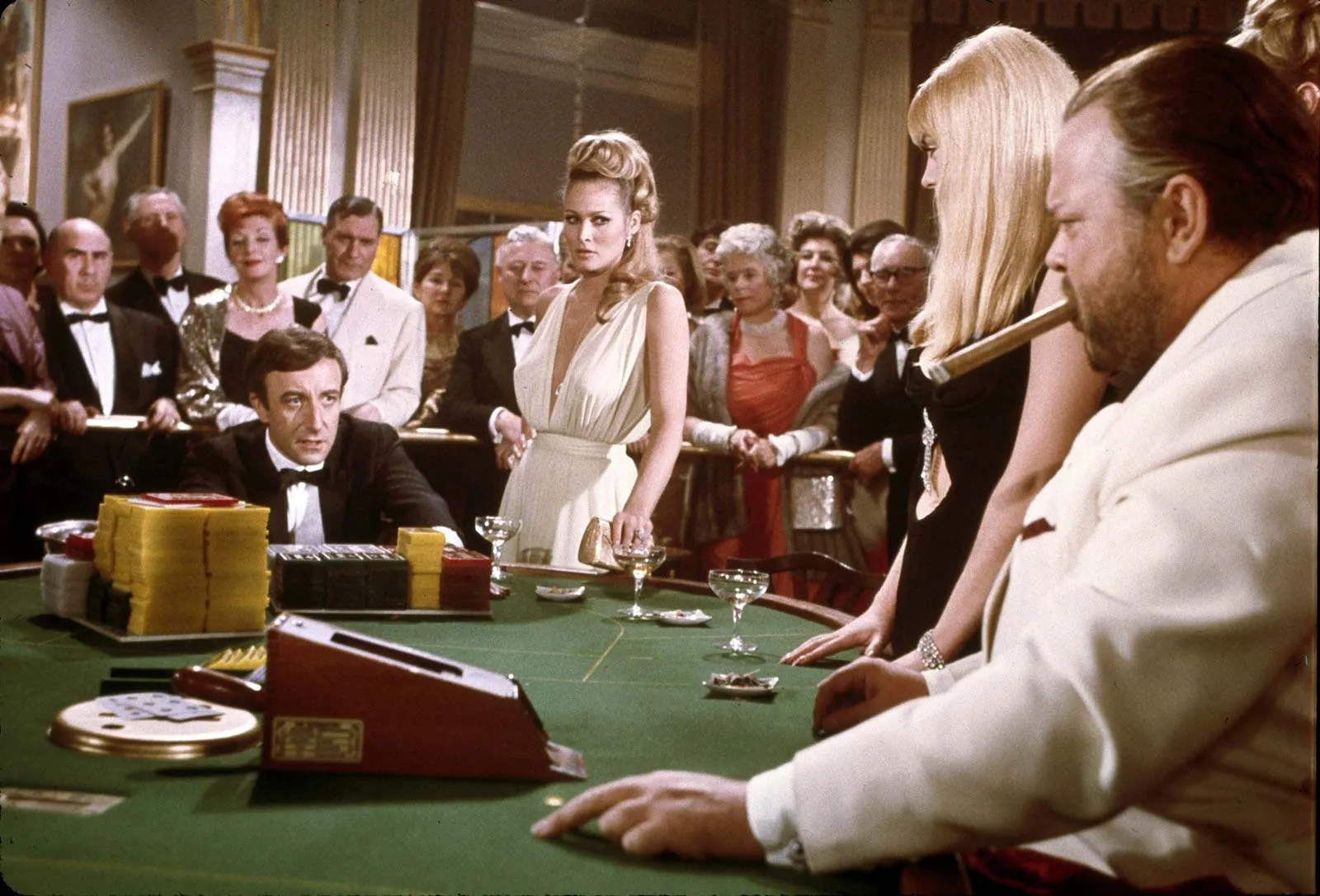radicalthought.org – “Casino Royale,” released in 1967, is a unique entry in the James Bond filmography. Unlike the traditional Bond thrillers, this film is a comedic parody that takes a playful and irreverent approach to the spy genre. With a star-studded cast and a chaotic storyline, “Casino Royale” offers a distinctly different take on the suave secret agent.
A Parodic Spin on Bond
“Casino Royale” diverges from the standard James Bond formula by presenting a satirical and farcical interpretation of the iconic character. The film follows the original Bond, Sir James Bond (played by David Niven), who is coaxed out of retirement to confront a mysterious organization, SMERSH, intent on global domination. In a bizarre twist, multiple characters assume the name “James Bond” as a ploy to confuse their enemies, adding to the film’s comedic chaos.
Star-Studded Cast and Direction
The film boasts an impressive ensemble cast, including Peter Sellers, Ursula Andress, Orson Welles, and Woody Allen, each contributing to the comedic flair of the narrative. David Niven’s portrayal of the distinguished Sir James Bond offers a stark contrast to the more traditional depictions of the character, infusing the role with wit and humor.
“Casino Royale” is notable for its unconventional production, involving multiple directors, including John Huston, Ken Hughes, and Robert Parrish. The result is a film with a distinctive, albeit disjointed, style that reflects the varied comedic sensibilities of its contributors.
A Chaotic Plot and Unique Style
The plot of “Casino Royale” is intentionally convoluted, weaving together numerous subplots and comedic set pieces. From a baccarat game with the villainous Le Chiffre (played by Orson Welles) to a climactic battle in a psychedelic casino, the film embraces absurdity at every turn.
The film’s visual style is equally eclectic, incorporating elements of 1960s pop culture and psychedelic aesthetics. The extravagant set designs, colorful costumes, and imaginative sequences contribute to the film’s distinctively surreal atmosphere.
Legacy and Reception
While “Casino Royale” received mixed reviews upon its release, with some critics praising its humor and others lamenting its lack of coherence, it has since gained a cult following for its audacious approach. The film stands as a testament to the enduring appeal of the James Bond character, capable of inspiring both serious and satirical interpretations.
In conclusion, “Casino Royale” (1967) offers a comedic and unconventional take on the James Bond legacy, providing a playful counterpoint to the more traditional films in the series. Its blend of humor, star power, and chaotic storytelling makes it a memorable and entertaining entry in the world of cinematic parodies. For fans of both Bond and comedy, “Casino Royale” is a quirky and enjoyable exploration of the spy genre’s lighter side.
